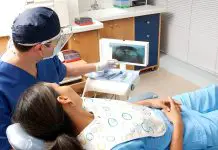Overview, Causes, & Risk Factors
Chlamydia is a sexually transmitteddisease, or STD, caused by the organism Chlamydiatrachomatis. Sexually transmitted disease refers to any contagiousdisease transmitted from one person to another during sexual contact.
What is going on in the body?
The organism Chlamydia trachomatis causes chlamydiainfection. It infects the cells and causes a number of changes. The organism isusually passed from one partner to another during sexual intercourse. Aninfection can also be passed from an infected mother to her baby duringbirth.
Chlamydia infections most commonly involve the following parts of the body:
What are the causes and risks of the infection?
The organism that causes a chlamydia infection is usually passedfrom one partner to another during sexual intercourse. Any other intimatecontact of the genitals, mouth, rectal area, or the sharing of sexual toys cantransmit the organism from one individual to another.
A person is at higher risk if he or she has more than one sexual partner ordoesn’t practice safersex measures, such as using condoms.
A newborn baby is at risk of chlamydia infection if the mother has achlamydia infection involving the birth canal.
Symptoms & Signs
What are the signs and symptoms of the infection?
Many chlamydia infections do not cause any symptoms. For this reason, a sexualpartner may be exposed without either partner knowing it. They may pass theorganism to other unsuspecting partners.
A chlamydia infection of the cervix in a female may include the following symptoms:
A chlamydia infection of the urethra in a male may include the following symptoms:
Chlamydia infections of the throat usually cause a sore throat.
Following are symptoms that can result from chlamydia infections of the rectum:
A newborn infected with chlamydia may have eyedischarge from an eye infection or breathing problems from pneumonia.
Diagnosis & Tests
How is the infection diagnosed?
The provider may suspect a chlamydia infection after taking a medical historyand performing an examination. The provider may take a sample of material fromthe infected area to be checked in the laboratory for the organisms that causethe infection. For a cervical infection, this would involve a pelvic examination and a culture ofmaterial from the surface of the cervix. Cultures can also be done of theurethra, rectum, throat, eyes, or other body sites.
Prevention & Expectations
What can be done to prevent the infection?
Several safer sex practices can help prevent the spread ofchlamydia infection. Malecondoms and femalecondoms provide some protection. Single partner relationships aresafer than sexual interaction with multiple partners.
Any new partners should be asked about their sexual history and should betested for sexually transmitteddisease. Sexual contact should be postponed until the tests show noinfection in the partner.
Finally, a screening for chlamydia can be done at the same time as a routine annualPapsmear and pelvic exam. Chlamydia screening in pregnant womencan help stop the infection in newborns.
What are the long-term effects of the infection?
Chlamydia infections in females are strongly associated with thedevelopment of cervicaldysplasia, or abnormal cells in the cervix, and cancer of the cervix.
It is important to treat chlamydia infections of the cervix in women toprevent scarring of the fallopian tubes which connect the ovaries to theuterus. Severe or untreated chlamydia infections can cause the following seriouscomplications:
Chlamydia infections in men can cause acute epididymitis, or aninflammation of a structure attached to the testes. Rectal chlamydia can causenarrowing of the rectum or ulcers in the rectum.
Chlamydia infections of the newborn can cause visual impairment, respiratory problems, and death.
What are the risks to others?
Chlamydia infections are highly contagious and can be passedthrough sexual intercourse and other intimate contact. A woman who is pregnantcan pass the chlamydia infection to her baby during delivery. The baby maythen develop an eye infection or pneumonia.
Treatment & Monitoring
What are the treatments for the infection?
Taking antibiotics usually cures the infection. Normal healing may still leavesome scar tissue. Sexual partners should also be treated. Sometimes acombination of antibiotics is used for 7 to 10 days. Antibiotics used to treatchlamydia infections include azithromycin, doxycycline, ofloxacin,sulfisoxazole, and erythromycin.
For severe infections that spread to the abdomen, antibiotics are injected intoa vein. This procedure is done in the hospital. It is important to note that having the infectiondoes not make one immune to it. Anyone can be infected repeatedly.
What are the side effects of the treatments?
Antibiotics may cause stomach upset, rash, or allergic reactions.
What happens after treatment for the infection?
Antibiotic treatment usually works, but there may still be scarring of thewoman’s reproductive organs. Someone who does not finish taking the entirecourse of antibiotics can be reinfected. Reinfection may also occur unless allsexual partners are treated.
How is the infection monitored?
After a course of antibiotics has been taken successfully, the healthcareprovider may repeat the culture of material from the infected area. If the testis positive, it usually means reinfection has occurred. This is particularlylikely if a sexual partner has not been treated or did not complete treatment.
Being screened for chlamydia every year, or any time there is a new sexualpartner, is a good practice. Any new or worsening symptoms should be reportedto the healthcare provider.
Article type: xmedgeneral













































